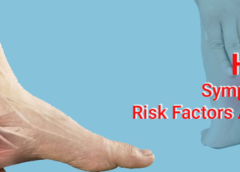A heel spur is a calcium deposit that caused bony development. These growths can occur in the back of or below your heel, or under your foot sole.
Many people may have no symptoms while others may have severe heel pain. A heel spur can also be associated with plantar fasciitis, an inflammation of the tissue that supports the foot’s spine.
Heel Spur Symptoms
Pain on the heel is probably the most noticeable symptom of a heel injury. Nevertheless, a heel injury may cause pain to radiate through the foot with the complicated structure of the foot and ankle – making it difficult to diagnose initially.
Here are the signs that will help you understand better whether you are having a heel injury:
- Pain such as “a knife cutting in the back of the heel”
- Swelling of soft tissue and inflammation in and around the heel region and back
- Bursitis, a painful disease affecting the thin, fluid-filled sacs that support the bones, tendons, and muscles near the joints of the heel.
- Redness on the heel
- Heat-radiating from heel
- An initial pain when you first get up
The easiest way to diagnose a heel injury and devise a treatment plan is also through an X-ray.
Heel spurs causes
One of the most frequent causes of heel spurs is the wear-and-tear that happens with osteoarthritis. Osteoarthritis affects the cartilage which is cushioning the heel bone edge. Bone spurs are created, as the body attempts to repair the damage. However, some other can heel spurs and risk factors include:
- Various ways of walking
- Walk or jog.
- Shoes which do not support
- Overweight weight, especially obesity
What Are Risk Factors for Heel Spurs?
Several factors increase the risk of heel spurs developing. Including:
- Physical activity: Running and jumping may damage the heel and the foot arch.
- Hard surface activity: Walking, running or jumping regularly on hard surfaces will wear your heel down.
- Heel trauma: Bruising the heel and removing the membrane that protects the heel will lead to spurs in the heel.
- Getting older: In a 2008 study heel spurs were found to be normal in older men and women.
- Being female: In a 2014 study heel spurs were found to be more common in women than in men.
- Being overweight: Researchers have found heel spurs to be associated with obesity.
- Improper footwear: Also wearing shoes that do not fit properly, have lost their support, or are not comfortable, such as flip-flops, can lead to spurs on the feet.
What are the potential complications of heel spurs?
Painful heel spurs will impair your ability to walk correctly, which may change your gait and cause knee, hip, or back problems. Increased pain may also affect the quality of life because due to the pain it can because you can skip certain tasks and daily exercise.
If foot surgery is required to treat spurs in your feet, consider the risk of surgical complications. Those include heightened discomfort, inflammation, clots of blood, and bleeding. To explore the benefits and risks of heel surgery for your condition it is necessary to consult with an experienced foot surgeon.
How to prevent heel spurs?
Preventing heel spurs requires a greater commitment to the general health of your foot. Be mindful of the pressures you put on your feet every day. Be sure at the end of the day, to give them rest. As a rule of thumb, any heel pain that occurs should never be pushed through.
Walking, running, or wearing shoes that cause heel pain can lead to long-term problems such as heel spurs. If after some exercise you feel heel pain ice the area and rest your foot before it gets better.
Some other tips which may help you:
- Rest
- Cold packs
- Anti-inflammatory medication such as ibuprofen
- Proper stretching before activity
- Proper footwear or shoe inserts
- Corticosteroid injections
- Surgery (for more severe, prolonged conditions)

Leave a Reply
You must be logged in to post a comment.